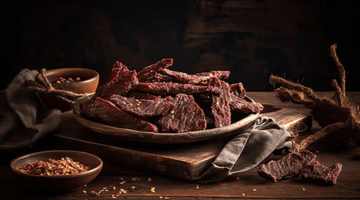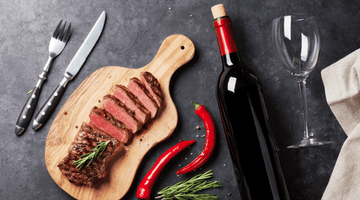
Beef, a versatile and beloved meat, offers a plethora of cuts that can make or break a dish. Understanding the different cuts and their recommended cooking methods is essential for anyone who loves to cook or enjoys a good steak.
In this quick guide, we'll have a look at the world of beef cuts, exploring the origins of various recommended cuts and mastering the art of butchery.
Where Do Different Recommended Beef Cuts Come From?
The diverse range of beef cuts stems from the various regions of the animal's body. Each cut has its unique texture, flavor, and cooking requirements. The art of selecting the right cut for a particular dish lies in understanding the anatomy of the animal.
The 10 Primal Cuts of a Beef-
Rump
The rump is a lean and flavorful cut, located at the hindquarters of the animal. Known for its robust taste, it's ideal for roasting, grilling, or slow-cooking. Searing the rump before slow-cooking enhances its natural flavors, making it a favorite for pot roasts.
Brisket
Positioned beneath the chuck, brisket is a tough yet flavorful cut. This cut benefits from slow-cooking methods like braising or smoking, breaking down the tough fibers and resulting in a melt-in-your-mouth texture. Brisket is a staple in barbecue culture, producing iconic dishes like smoked brisket.
Plate
The plate cut, located below the rib and brisket, is rich in marbling and collagen. These attributes make it perfect for slow-cooking, braising, or barbecuing. Short ribs, extracted from the plate, are a popular choice for those who appreciate tender, succulent meat.
Chuck
The chuck, situated in the front part of the animal, contains a mix of meat and connective tissue. This makes it suitable for slow-cooking methods such as stewing or braising. Ground beef also often comes from the chuck, providing a versatile option for various dishes like burgers and meatballs.
Rib
The rib section offers some of the most tender and flavorful cuts, including prime rib and ribeye steaks. Best suited for dry-heat cooking methods like roasting or grilling, the rib section is a favorite for steak lovers seeking a perfect balance of tenderness and taste.
Short Loin
Home to premium cuts like T-bone and porterhouse steaks, the short loin is a section that combines both tenderloin and sirloin. This cut is perfect for grilling or pan-searing, allowing the natural marbling to enhance the flavor and tenderness.
Sirloin
The sirloin, situated between the short loin and round, offers a balance of tenderness and flavor. Ideal for grilling, broiling, or pan-frying, sirloin steaks are versatile and can be prepared in various ways, making them a popular choice for steak enthusiasts.
Flank
Flank steak is a lean and fibrous cut from the abdominal muscles. Best suited for marinating and grilling, flank steak shines when sliced against the grain for maximum tenderness. Fajitas and stir-fries often feature this cut, showcasing its ability to absorb flavors.
Round
As a lean and budget-friendly option, the round is located at the hindquarters. While it may be less tender than other cuts, it benefits from slow-cooking methods like braising or stewing. Slicing it thinly against the grain after cooking enhances its tenderness.
Shank
The shank, found in the lower leg of the animal, is rich in connective tissue and marrow. Slow-cooking or braising is the best approach to break down the tough fibers and create a flavorful broth. Shank cuts, often used in soups and stews, add depth and richness to the dish.
The Art of Butchery: Cutting Techniques and Special Cuts
Mastering the art of butchery involves understanding how to break down primal cuts into secondary cuts and special cuts. Butchers use various techniques to create specific cuts tailored to different cooking methods. Special cuts, like filet mignon and tri-tip, showcase the skill and precision involved in butchery.
In conclusion, understanding the different beef cuts and their recommended cooking methods is crucial for achieving culinary excellence. Whether you prefer a tender filet mignon or a slow-cooked pot roast, the right cut and cooking technique can elevate your beef dishes to new heights. Embrace the art of butchery, experiment with various cuts, and savor the rich flavors that beef has to offer.
FAQs
-
What are primal cuts of beef?
Primal cuts are large sections of meat obtained from specific areas of the animal, such as the chuck, loin, or round. These cuts serve as the foundation for further butchering and preparation.
-
What makes secondary cuts different from primal cuts?
Secondary cuts, derived from primal cuts, are smaller and more specialized. Butchers use specific cutting techniques to create secondary cuts tailored to different cooking methods, textures, and flavors.
-
Can any cut be roasted?
While roasting is a popular cooking method for many cuts, not all cuts are suitable for roasting. Tender cuts with moderate marbling, like ribeye or tenderloin, are best for roasting. Tougher cuts, like chuck or brisket, benefit from slow-cooking methods to break down collagen and achieve tenderness.




